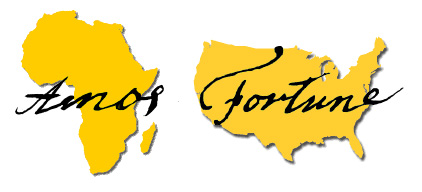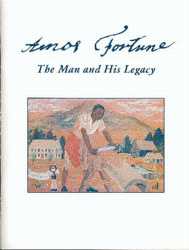
|
�Many of you have reached my page in a search for Amos Fortune - usually because you (or your class) is reading Elizabeth Yates' book Amos Fortune - Free Man. If you have already viewed my homepage, than you already klnow that I am the author of Amos Fortune - The Man and His Legacy. It was published in 2000 by the Amos Fortune Forum and is distributed by the Jaffrey, NH Public Library. It took a year to research, write, illustrate, and design this book. The Library is selling copies for $10, plus shipping and handling. If you wish to obtain a copy, please contact the library, not me. I do not have any copies to distribute. You can reach the Jaffrey Public Library's website here. If you want a condensed version of Amos Fortune's life, contuinue reading! |
 |
|
Amos Fortune was probably born around 1710, a date reached by calculating back from his recorded death in 1801 at age 91. Fortune's homeland was probably western Africa in the areas then known as Guinea or the "Gold Coast" (now consisting of such countries as Nigeria, Sierra Leone, Liberia, and Ghana) since this was the principal area frequented by slave traders from England and its colonies in America. Nothing is known about his life in Africa, or his journey to America as a slave. The earliest record we have of Amos Fortune
dates from 1752 when he was owned by Ichabod Richardson, a tanner
who lived in Woburn,
Massachusetts. Richardson's first will, dated May 11, 1752,
specifies that six years following his master's death, Amos Fortune
is to be freed. On December 30, 1763, Richardson had a formal manumission paper drawn up, promising freedom for Fortune four years after that date, or upon the death of Richardson should he die before the four years were over. However, the paper was never signed, and therefore was not legally binding.
|
